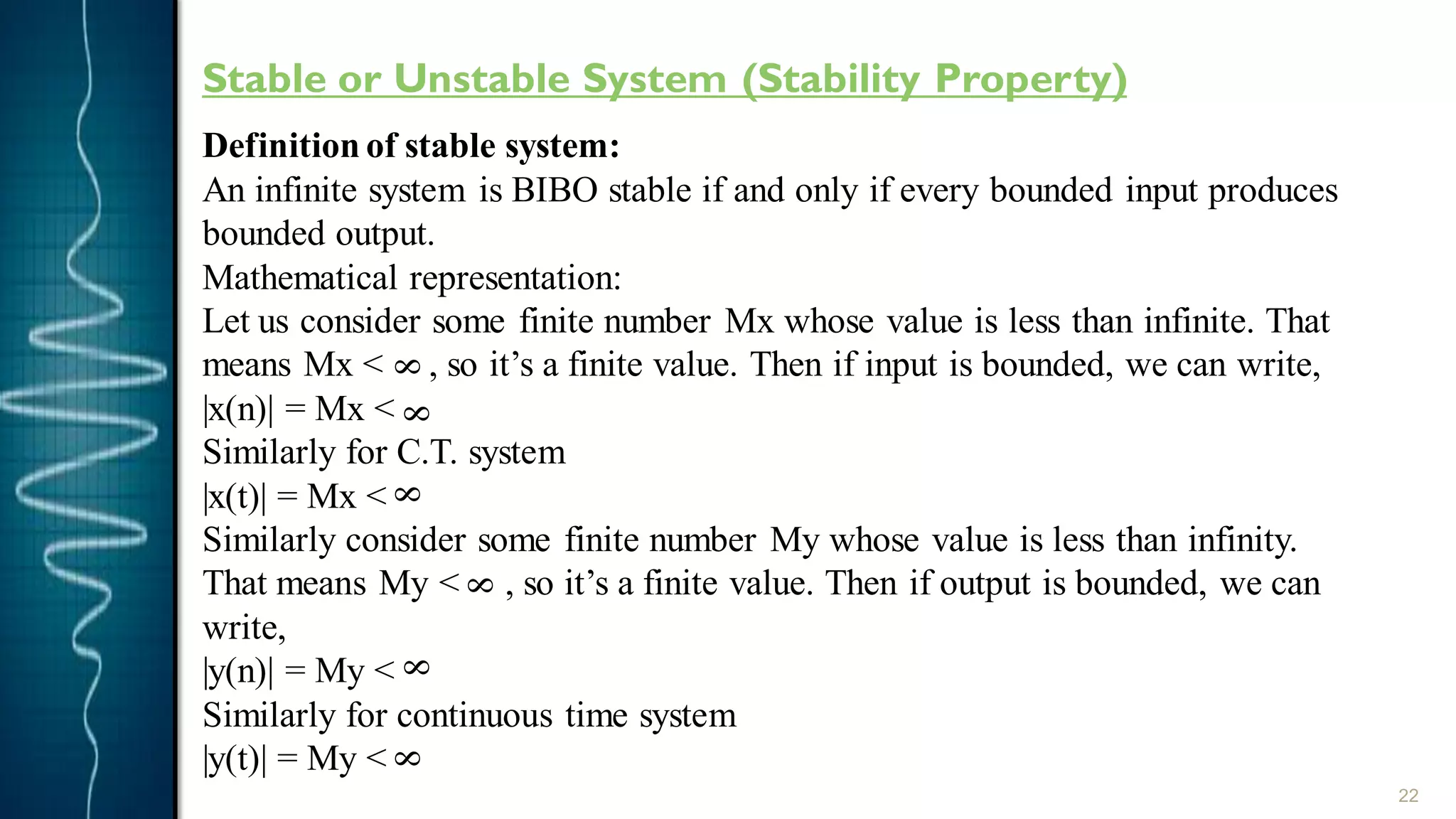1. The document discusses different types of systems based on their properties, including static vs dynamic, time-variant vs time-invariant, linear vs non-linear, causal vs non-causal, and stable vs unstable.
2. A system is defined as a physical device or algorithm that performs operations on a discrete-time signal. Static systems have outputs that depend only on the present input, while dynamic systems have outputs that depend on present and past/future inputs.
3. Time-invariant systems have characteristics that do not change over time, while time-variant systems have characteristics that do change. Linear systems follow the superposition principle, while causal systems have outputs dependent only on present and past inputs.
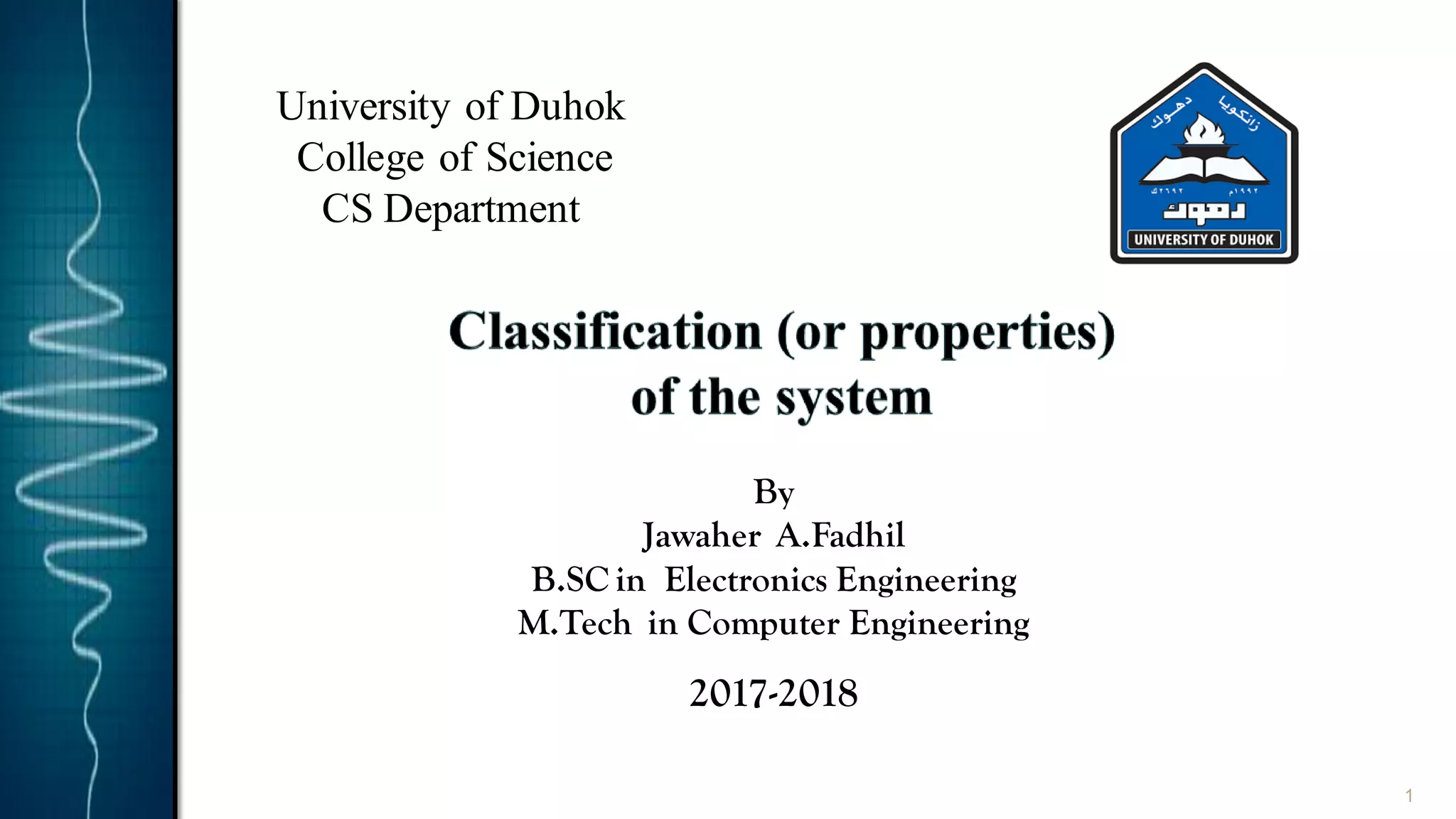
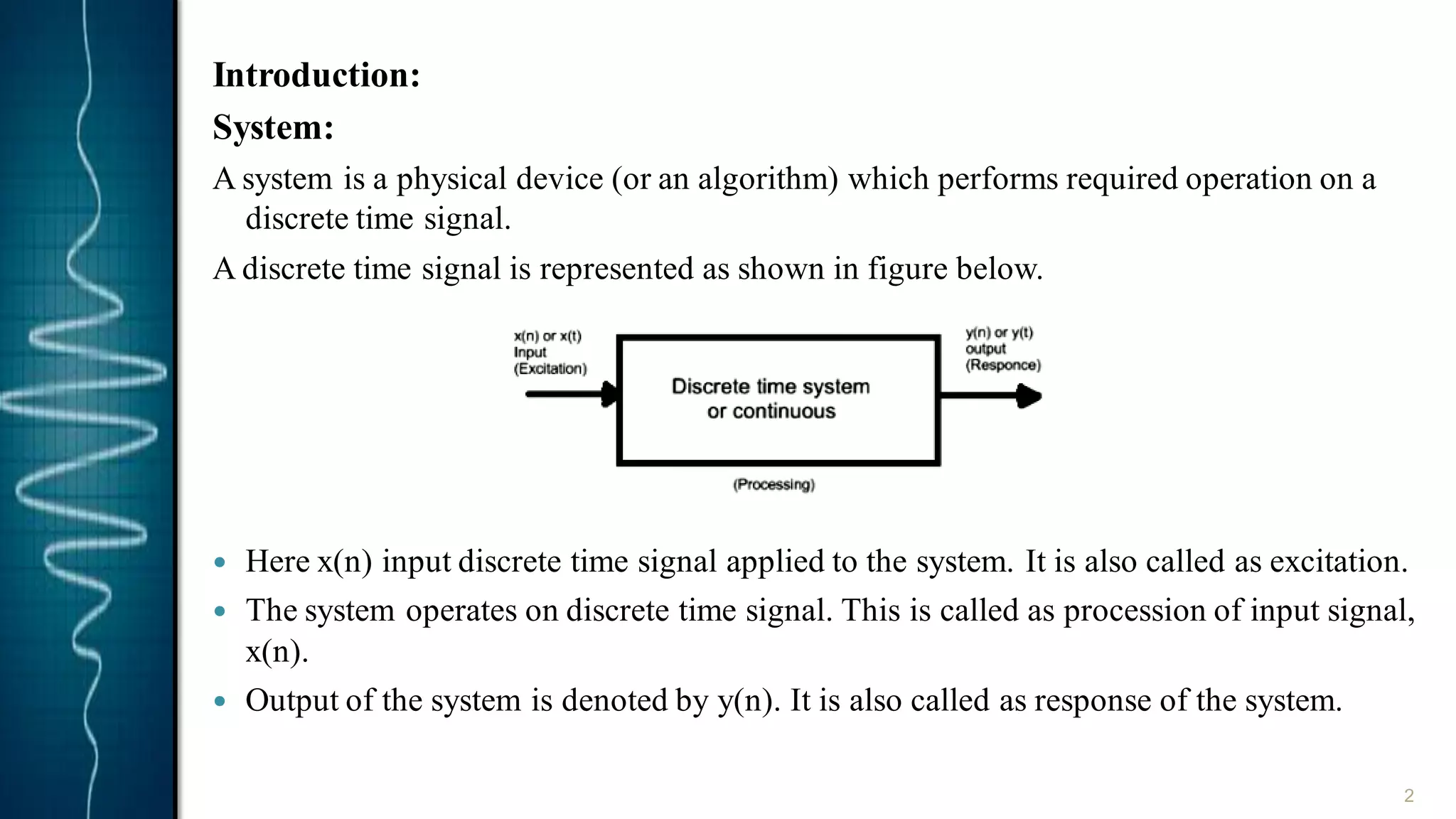
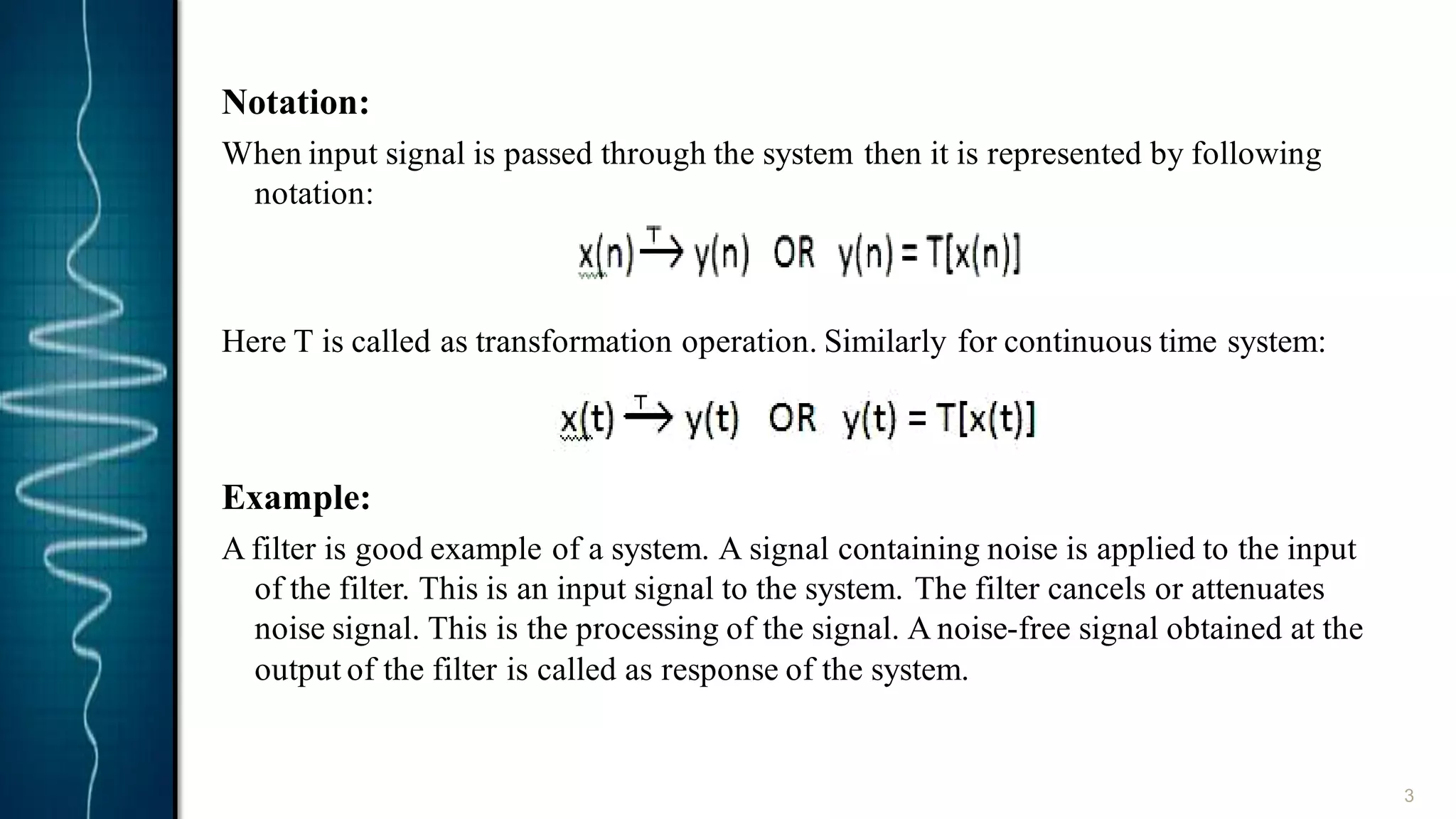

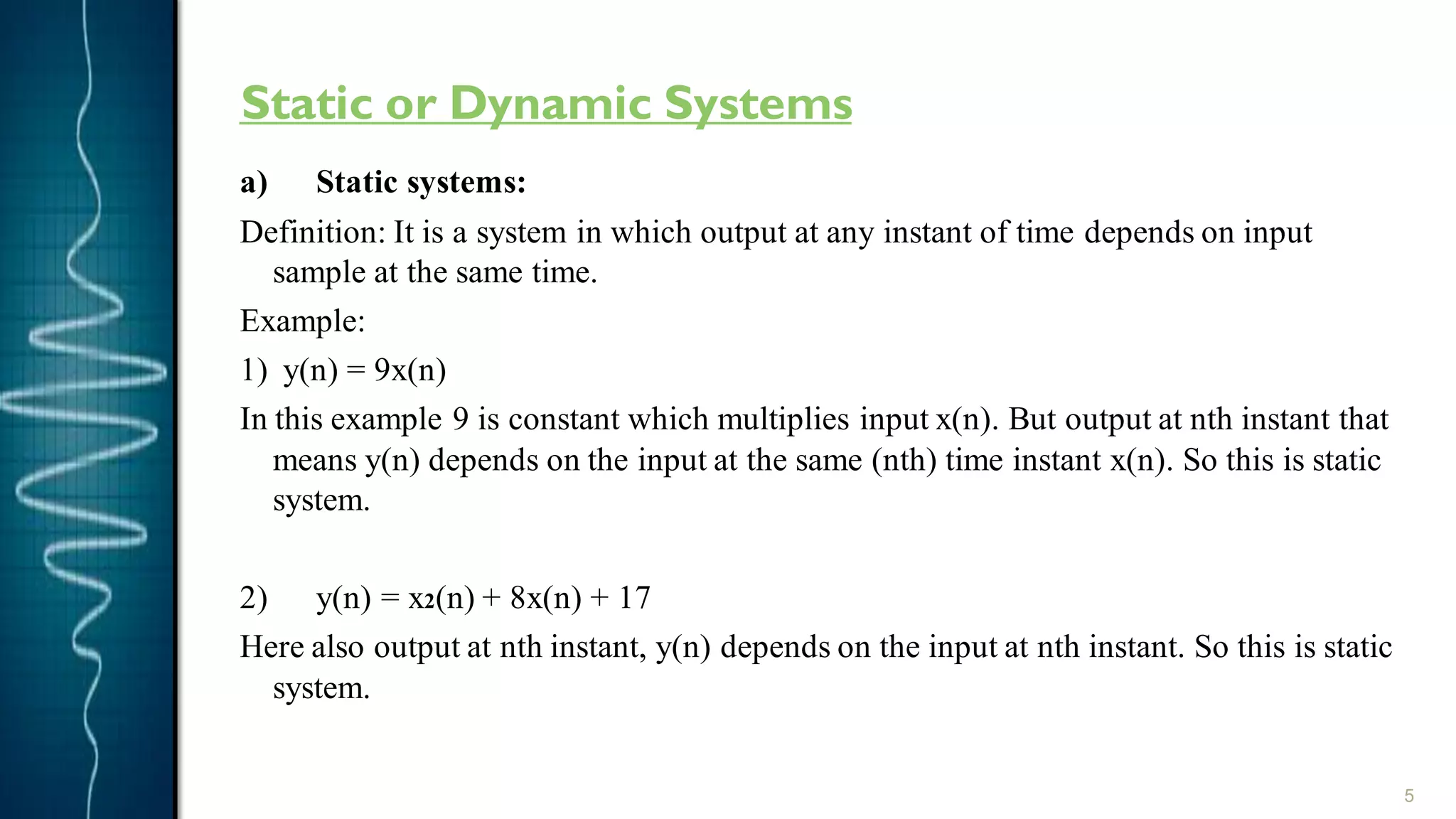
![Why static systems are memory less systems?
Answer:
Observe the input output relations of static system. Output does not depend on delayed
[x(n-k)] or advanced [x(n+k)] input signals. It only depends on present input (nth)
input signal. If output depends upon delayed input signals then such signals should be
stored in memory to calculate the output at nth instant. This is not required in static
systems. Thus for static systems, memory is not required. Therefore static systems are
memory less systems.
b) Dynamic systems:
Definition: It is a system in which output at any instant of time depends on input sample
at the same time as well as at other times.
Here other time means, other than the present time instant. It may be past time or future
time. Note that if x(n) represents input signal at present instant then,
1) x(n-k); that means delayed input signal is called as past signal.
6](https://image.slidesharecdn.com/lecture4signals-181130200508/75/Lecture-4-Classification-of-system-6-2048.jpg)
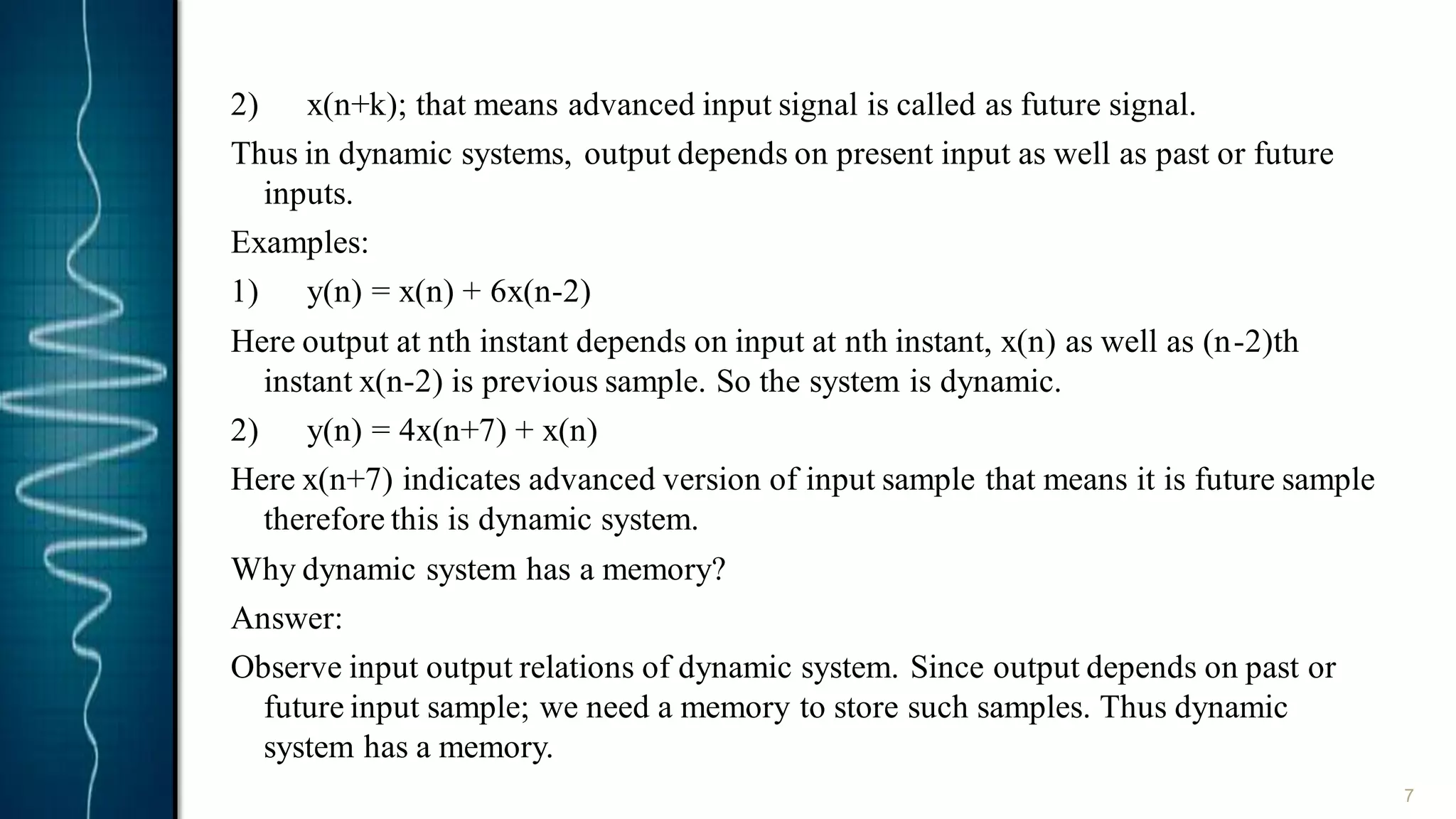
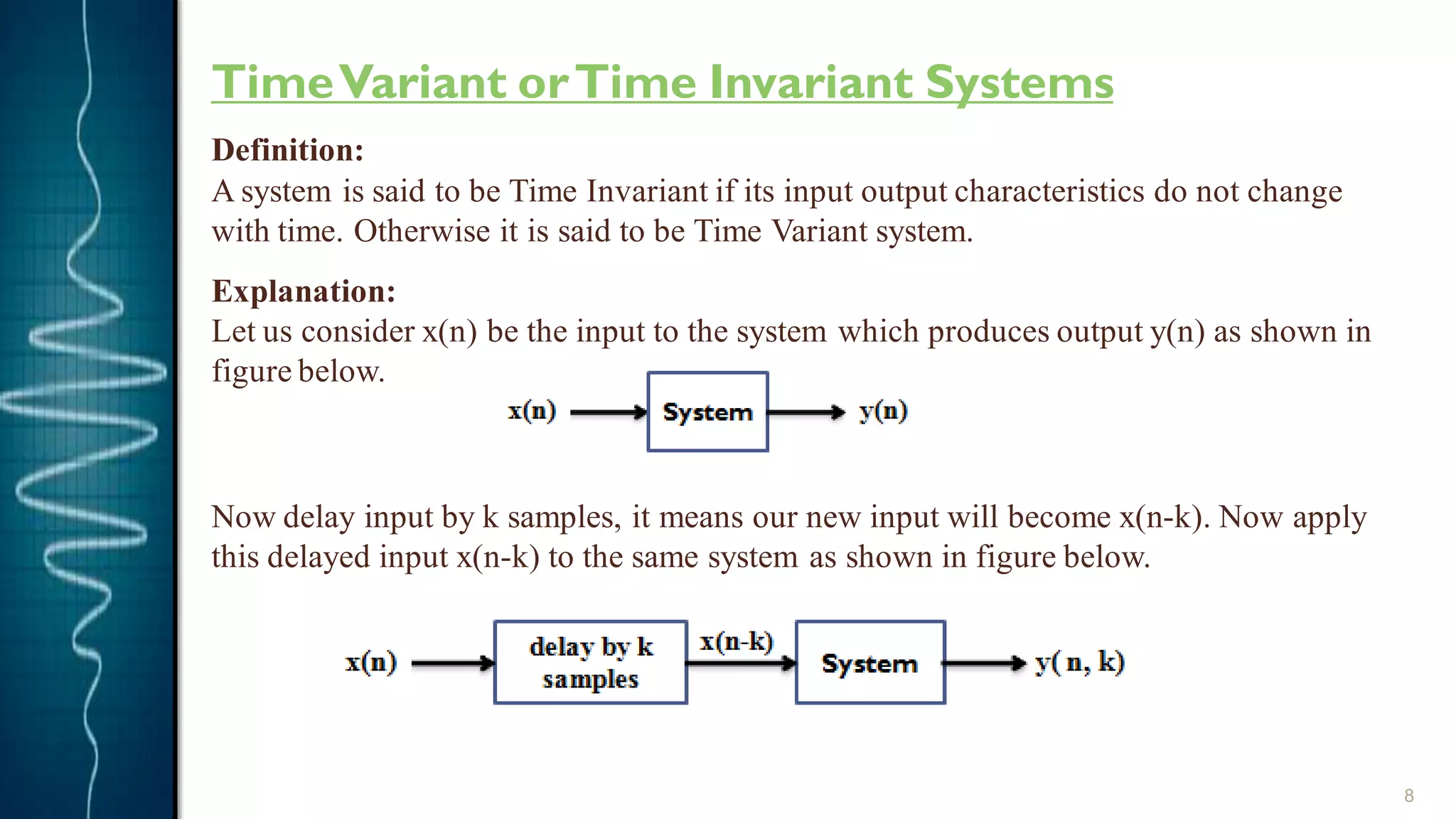

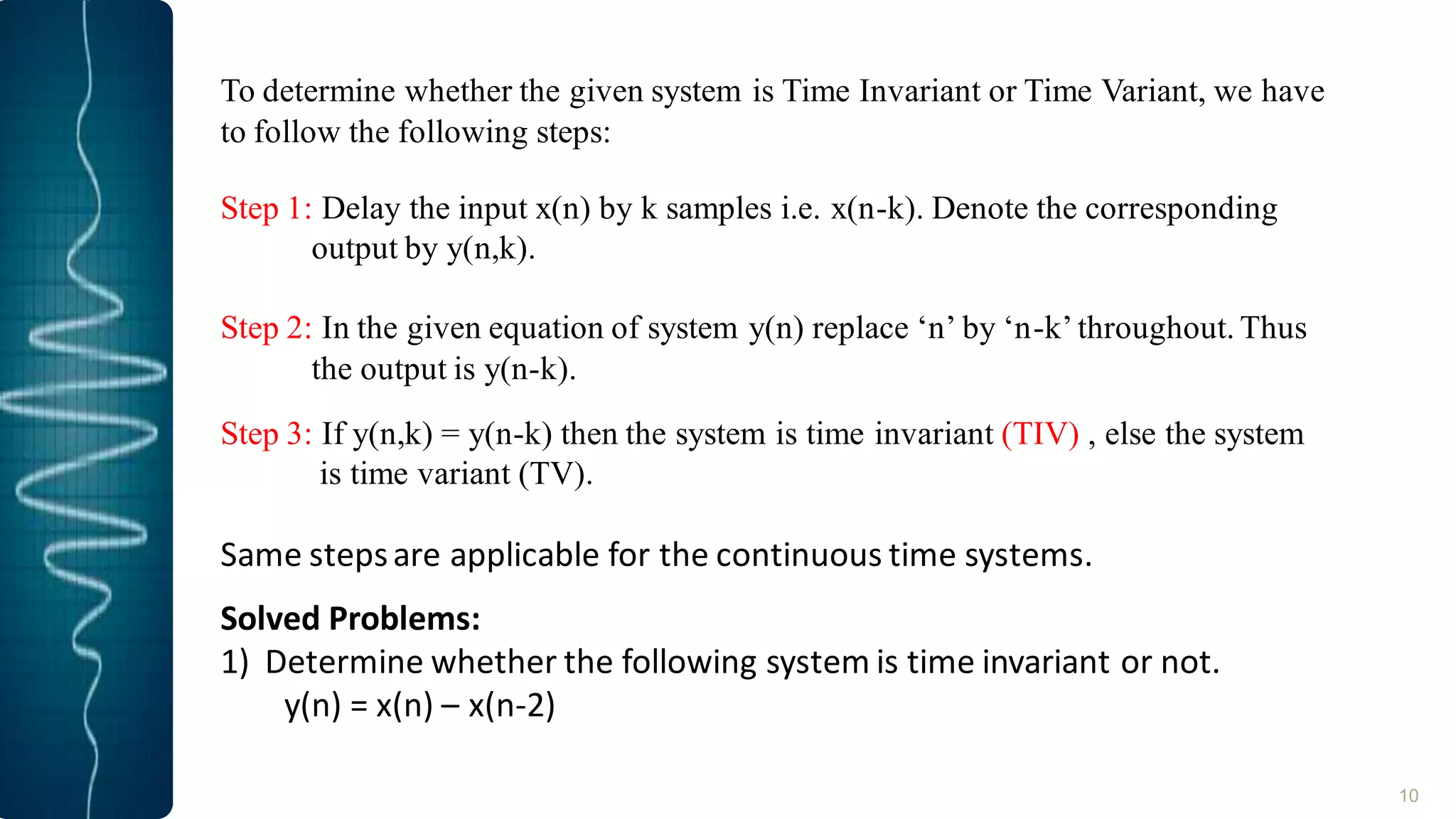

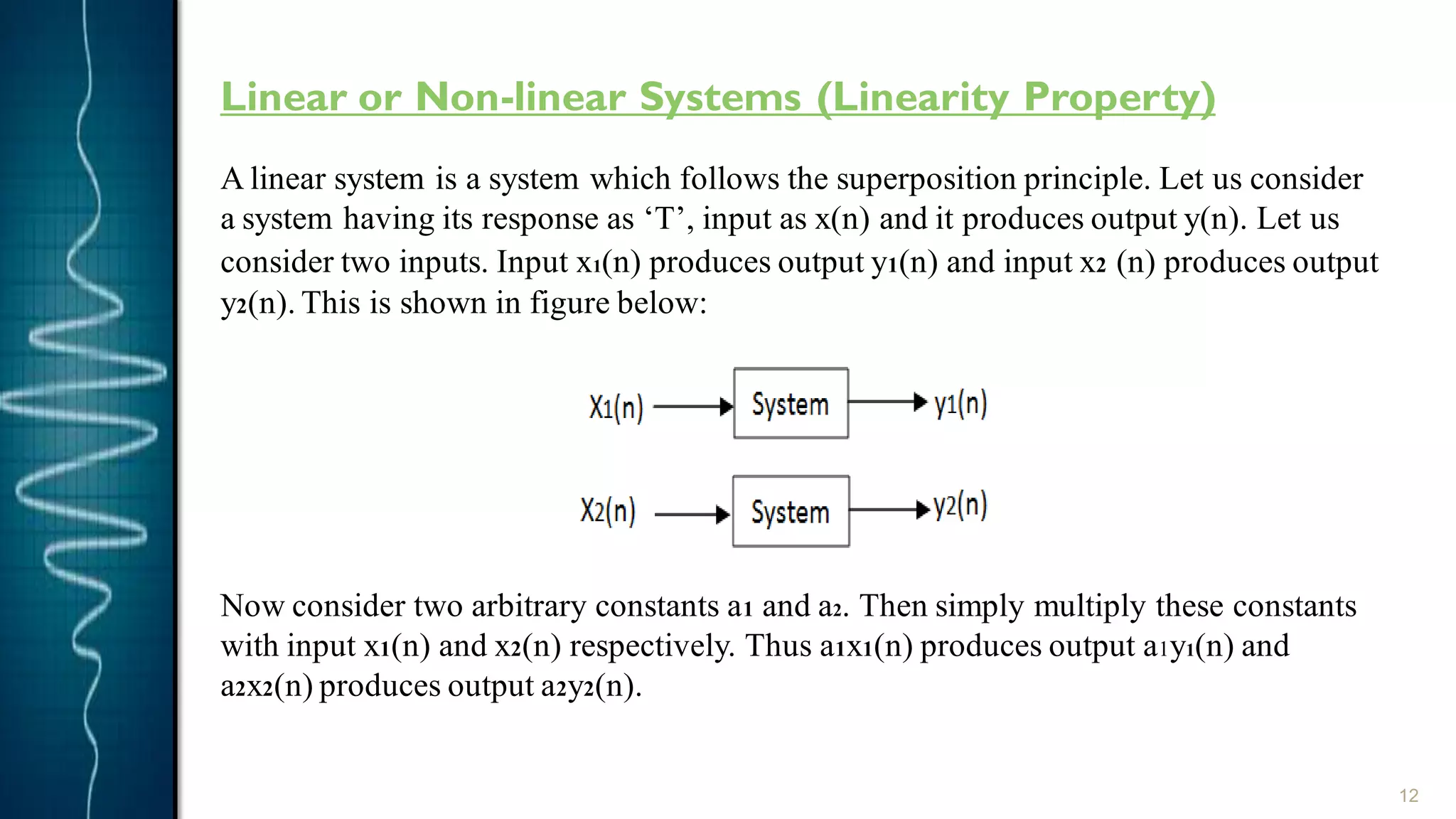
![13
Theorem for linearity of the system:
A system is said to be linear if the combined response of a1x1(n) and a2x2(n) is equal to
the addition of the individual responses.
That means,
T[a1 x1(n) + a2 x2(n)] = a1 T[x1(n)] + a2 T[x2(n)]
The above theorem is also known as superposition theorem.
Important Characteristic:
Linear system has one important characteristic: If the input to the system is zero then it
produces zero output. If the given system produces some output (non-zero) at zero input
then the system is said to be Non-linear system. If this condition is satisfied then apply
the superposition theorem to determine whether the given system is linear or not?](https://image.slidesharecdn.com/lecture4signals-181130200508/75/Lecture-4-Classification-of-system-13-2048.jpg)
![14
For continuous time system:
Similar to the discrete time system a continuous time system is said to be linear if it
follows the superposition theorem.
Let us consider two systems as follows:
y1(t) = f[x1(t)]
And y2(t) = f[x2(t)]
Here y1(t) and y2(t) are the responses of the system and x1(t) and x2(t) are the
excitations. Then the system is said to be linear if it satisfies the following expression:
f[a1 x1(t) + a2 x2(t)] = a1 y1(t) + a2 y2(t)
Where a1 and a2 are constants.
A system is said to be non-linear system if does not satisfies the above expression.](https://image.slidesharecdn.com/lecture4signals-181130200508/75/Lecture-4-Classification-of-system-14-2048.jpg)


![17
Now add these two output to get y’(n)
Therefore y’(n) = y1(n) + y2(n) = n x1(n) + n x2(n)
Therefore y’(n) = n [x1(n) + x2(n)]
Step 3: Now add x1(n) and x2(n) and apply this input to the system.
Therefore
We know that the function of system is to multiply input by ‘n’.
Here [x1(n) + x2(n)] acts as one input to the system. So the corresponding output is,
y”(n) = n [x1(n) + x2(n)]
Step 4: Compare y’(n) and y”(n).
Here y’(n) = y”(n). hence the given system is linear.](https://image.slidesharecdn.com/lecture4signals-181130200508/75/Lecture-4-Classification-of-system-17-2048.jpg)
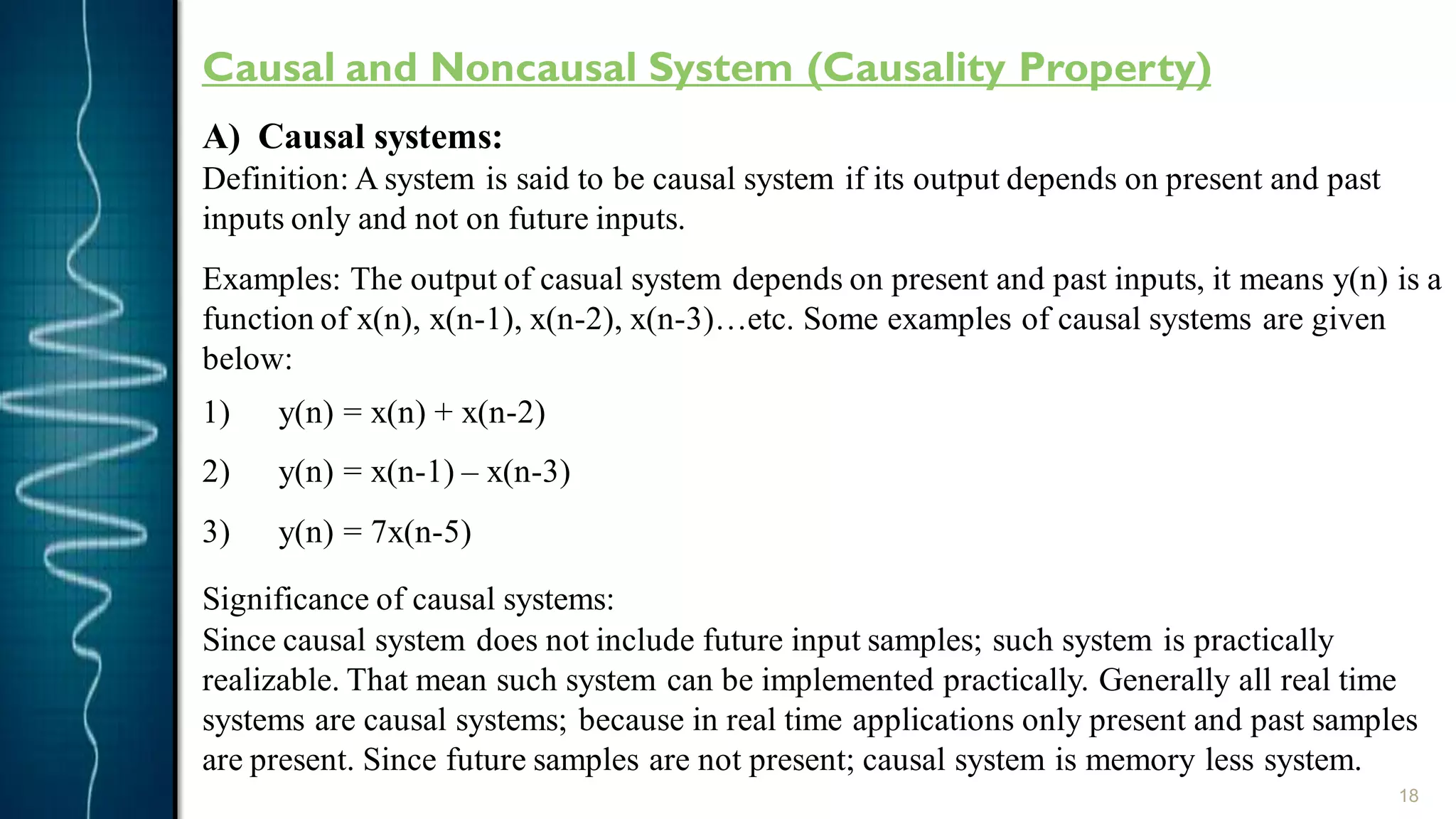


![21
Solved problems on causal and non-causal system:
Determine if the systems described by the following equations are causal or non-causal.
1) y(n) = x(n) + x(n-3)
Solution: the given system is causal because its output (y(n)) depends only on the present
x(n) and past x(n-3) inputs.
2) y(n) = x(-n+2)
Solution:
this is non-causal system. This is because at n = -1 we get y(-1) = x[-(-1)+2] = x(3).
Thus present output at n = -1, expects future input i.e. x(3)](https://image.slidesharecdn.com/lecture4signals-181130200508/75/Lecture-4-Classification-of-system-21-2048.jpg)
